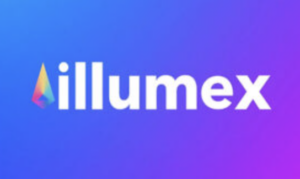(Tee11/Shutterstock)
Large Language Models (LLMs) are trained on vast amounts of text data, and the quality and variety of data play a key role in the ability of LLMs to generate human-like text. While enterprises realize the importance of data for their LLMs, they often struggle to get data ready for their AI models.Â
Illumex Technologies Inc., a Generative Semantic Fabric platform for structured enterprise data, leverages the power of GenAI to get data in a ready state for LLMs The two-year-old startup has announced that it has closed on a $13 million seed funding round to further its goal of empowering organizations to overcome data challenges.
The funding round was led by Cardumen Capital, Samsung Ventures, and Amdocs Ventures, with participation from ICI Fund, Iron Nation Fund, ICON Fund, Jibe Ventures, Ginossar Ventures, Today Ventures, and other renowned angel investors.
One of the goals of illumex is to make structured information easier for LLMs to use by automating the addition of a semantic layer that unifies data silos and adds context to structured data, facilitating more reliable and relevant AI interactions.Â
âThe key to enterprise generative AI success lies in solving the fundamental data challenges that have caused so many projects to fail,â said Inna Tokarev Sela, Founder and CEO of illumex. âOur Generative Semantic Fabric aligns organizational data with business meaning and domain-specific context, allowing organizations to finally trust the results of their AI initiatives. By enabling business users to interact reliably with data using natural language, without teaching them the precise technical definitions, weâre democratizing AI and empowering enterprises to make better decisions.âÂ
A recent study by McKinsey revealed that 65% of enterprises are regularly using GenAI, double the percentage from last year. While GenAI is delivering value for enterprises, concerns remain about the accuracy and reliability of GenAI.Â
The risk of hallucination is one of the major issues with GenAI. Some companies are tackling this issue by integrating retrieval-augmented generation (RAG), which can significantly enhance AI model performance. However, this approach can often be complex, especially for structured data.Â
Key problems include the need for continued maintenance and the lack of semantic meaning in structured data. In addition, structured data can require manual labeling and contextualization, which is resource-intensive and increases the risk of human error.Â
 Illumex aims to overcome these challenges by combining GenAI, graph databases, and relational databases, to pull the all information to what it calls the âGenerative Semantic Fabricâ. This allows the platform to automate the discovery, mapping, and semantic enrichment of structured enterprise data. According to Sela, the Generative Semantic Fabric aligns the data with business meaning and domain-specific context, allowing organizations to trust its AI models.
Illumex aims to overcome these challenges by combining GenAI, graph databases, and relational databases, to pull the all information to what it calls the âGenerative Semantic Fabricâ. This allows the platform to automate the discovery, mapping, and semantic enrichment of structured enterprise data. According to Sela, the Generative Semantic Fabric aligns the data with business meaning and domain-specific context, allowing organizations to trust its AI models.
The platform also analyzes metadata associated with structured datasets without accessing the underlying sensitive information to create a united semantic knowledge graph. The graph serves as a single source of truth that aligns all data with consistent business terminology and context.Â
Illumex was founded in 2021 by Sela, former AVP & Head of AI at Sisense and Senior Director of Machine Learning at SAP. While the startup had been operating in stealth mode, it has several large enterprises, including Carson and Teva, using its solutions.Â
The startup has partnered with tech giants Microsoft, AWS, and Google Cloud and also offers integration with enterprise communication tools such as Google Meet, Slack, and Teams. The seed funding round will enable illumex to make it easier for enterprises to derive more value from their structured data and help bridge the gap between AI innovation and adhering to the strict data governance and security requirements.  Â
Related ItemsÂ
Structured Data Management Fuels Majority of Second Half 2022 Compute & Storage Spending, Says IDC
IDC: Structured Database Workloads Drive Major IT Infrastructure Spending in Late 2023
There Are Four Types of Data Observability. Which One is Right for You?




